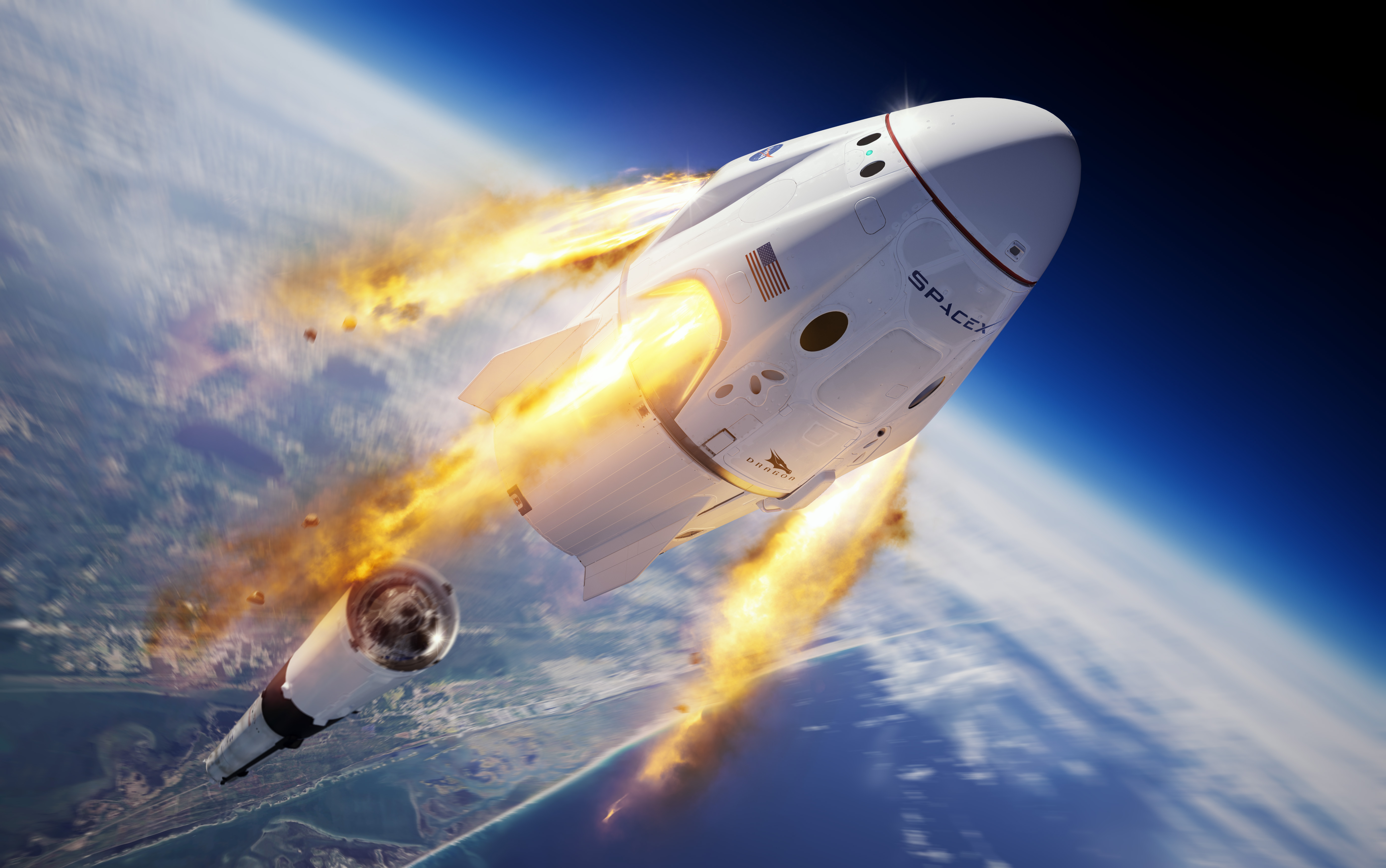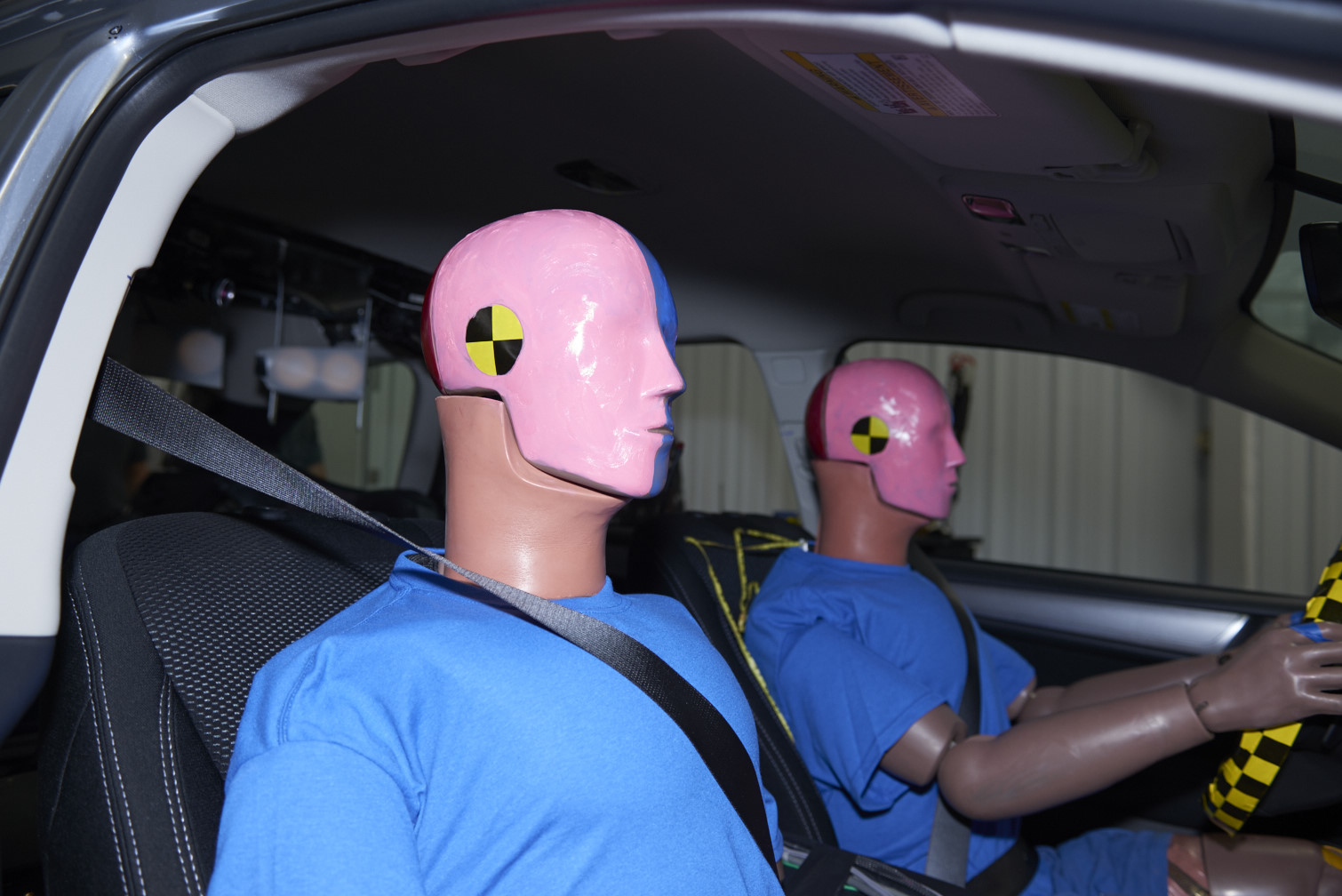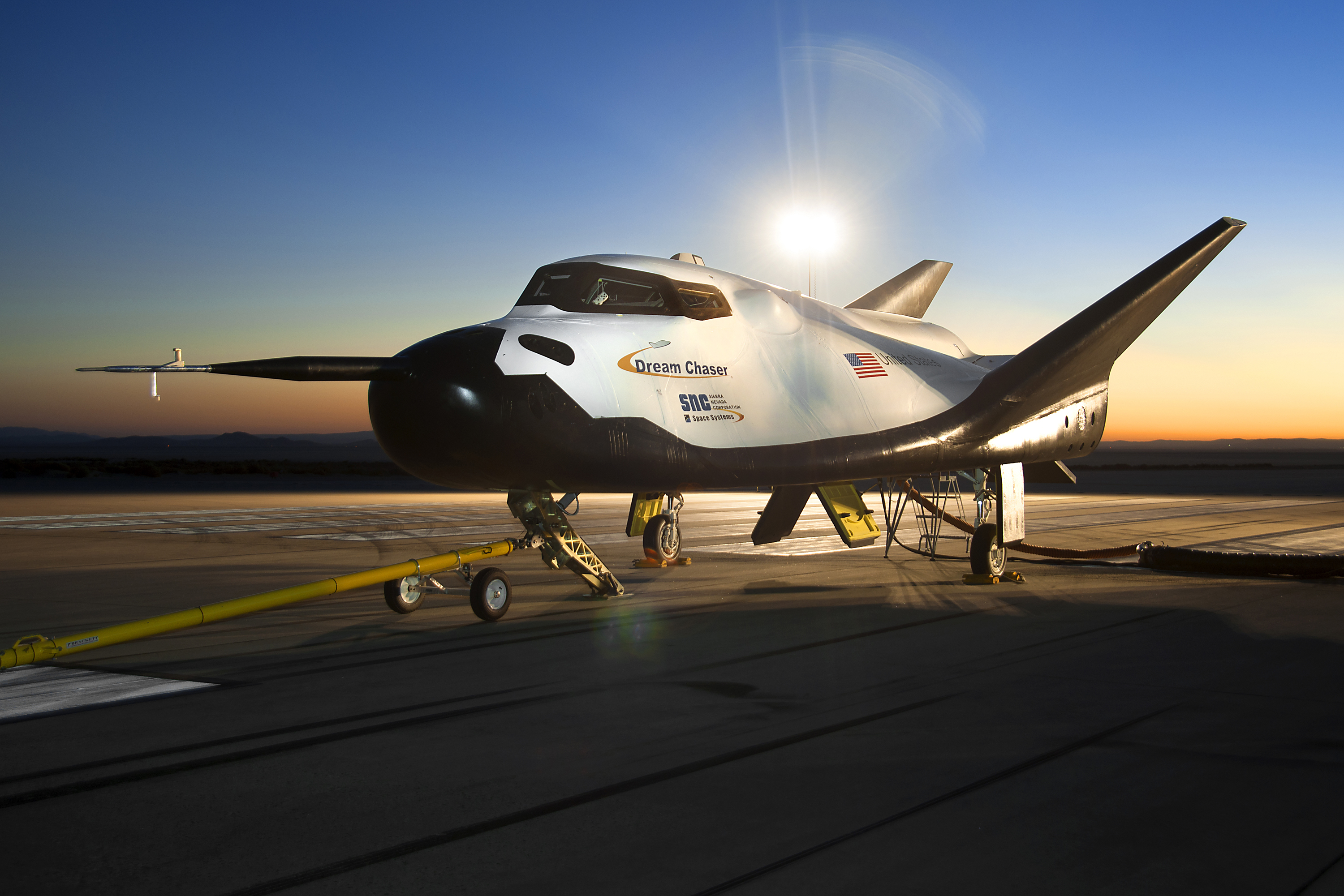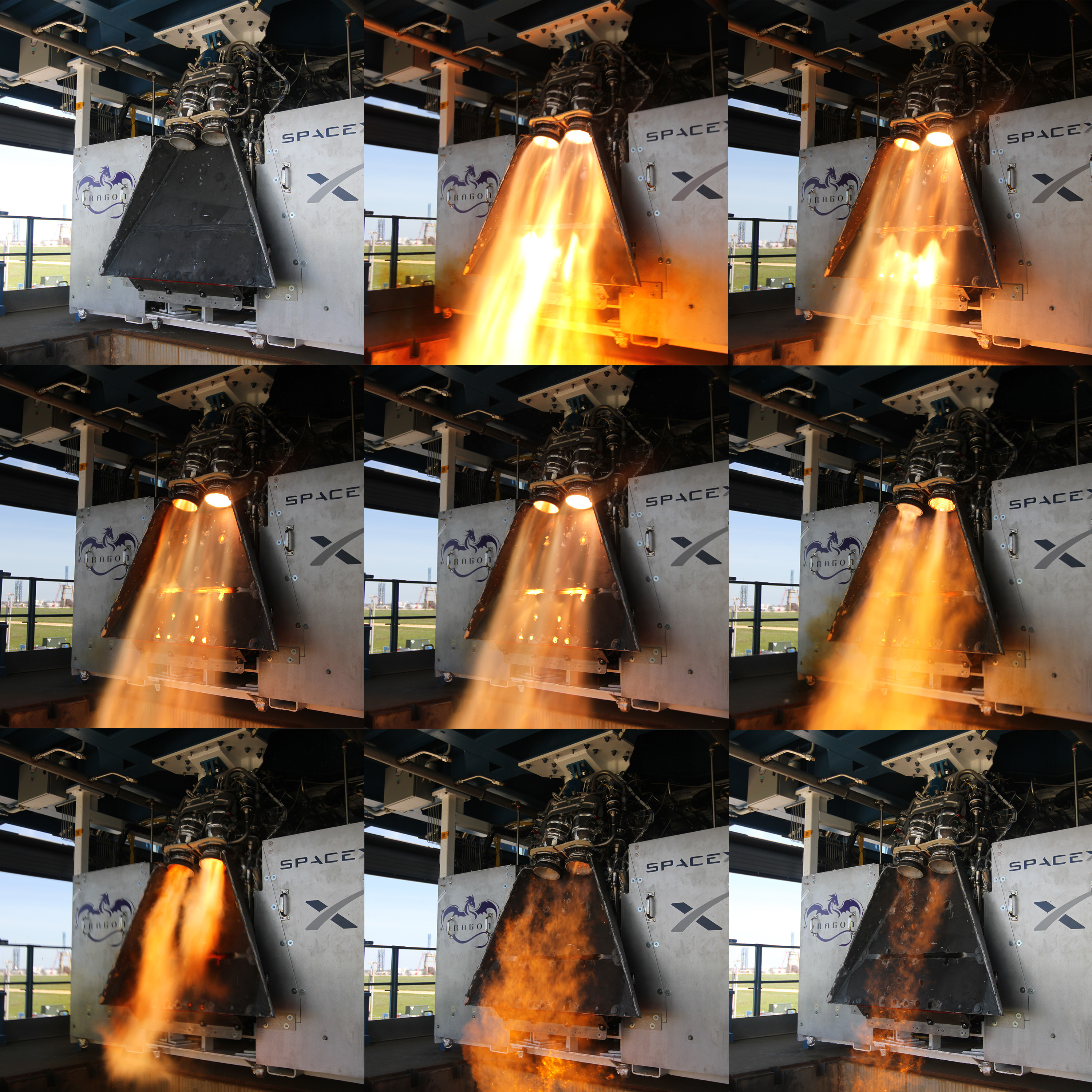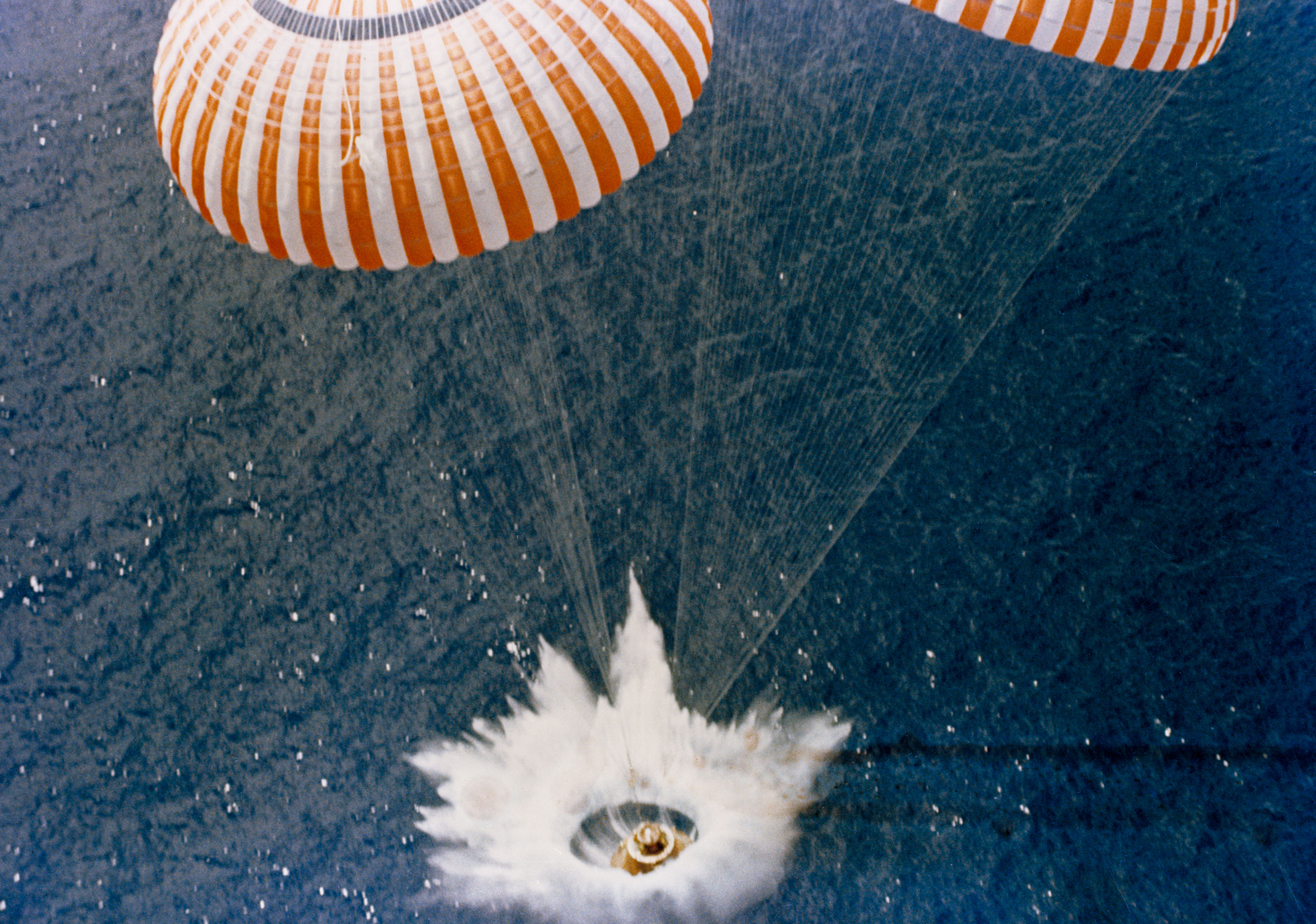|
SpaceX Demo-1
Crew Dragon Demo-1 (officially Crew Demo-1, SpaceX Demo-1, or Demonstration Mission-1) was the first orbital test of the Dragon 2 spacecraft. The mission launched on 2 March 2019 at 07:49:03 UTC, and arrived at the International Space Station on 3 March 2019, a little over 24 hours after the launch. The mission ended with a splashdown on 8 March 2019 at 13:45:08UTC. During a separate test, on 20 April 2019, the capsule used on Crew Demo-1 was unexpectedly destroyed when firing the SuperDraco engines at Landing Zone 1. Mission The spacecraft tested the approach and automated docking procedures with the International Space Station (ISS), consequent undocking from the ISS, full re-entry, splashdown and recovery steps to provide data requisite to subsequently qualify for flights transporting humans to the ISS. Life support systems were monitored throughout the test flight. The capsule was to be re-used in an in-flight abort test, but it was destroyed in an accident during a st ... [...More Info...] [...Related Items...] OR: [Wikipedia] [Google] [Baidu] |
Crew Dragon In-Flight Abort Test
The Crew Dragon In-Flight Abort Test (also known as Crew Dragon Launch Escape Demonstration) was a successful test of the SpaceX Dragon 2 abort system, conducted on 19 January 2020. It was the final assessment for the Crew Dragon capsule and Falcon 9 launch system before they would be certified to carry humans into space. Booster B1046.4 and an uncrewed capsule C205 were launched from Launch Complex 39A (LC-39A) on a suborbital trajectory, followed by an in-flight abort of the capsule at max Q and supersonic speed. The test was carried out successfully: the capsule pulled itself away from the booster after launch control commanded the abort, and landed safely. Background For the Commercial Crew Program, NASA requires participating companies to include and test a launch escape system in their crew-carrying vehicles. Prior to this, the last time American crewed spaceflight implemented the capability to escape a rocket during an emergency or anomaly was on the Saturn IB lau ... [...More Info...] [...Related Items...] OR: [Wikipedia] [Google] [Baidu] |
Space Suit
A space suit (or spacesuit) is an environmental suit used for protection from the harsh environment of outer space, mainly from its vacuum as a highly specialized pressure suit, but also its temperature extremes, as well as radiation and micrometeoroids. Basic space suits are worn as a safety precaution inside spacecrafts in case of loss of cabin pressure. For extravehicular activity (EVA) more complex space suits are worn, featuring a portable life support system. Pressure suits are in general needed at low pressure environments above the Armstrong limit, at around above Earth. Space suits augment pressure suits with complex system of equipment and environmental systems designed to keep the wearer comfortable, and to minimize the effort required to bend the limbs, resisting a soft pressure garment's natural tendency to stiffen against the vacuum. A self-contained oxygen supply and environmental control system is frequently employed to allow complete freedom of movement ... [...More Info...] [...Related Items...] OR: [Wikipedia] [Google] [Baidu] |
Crash Test Dummy
A crash test dummy, or simply dummy, is a full-scale Anthropomorphism, anthropomorphic test device (ATD) that simulates the dimensions, weight proportions and articulation of the human body during a traffic collision. Dummies are used by researchers, automobile and aircraft manufacturers to predict the injuries a person might sustain in a crash. Modern dummies are usually instrumented to record data such as velocity of impact, crushing force, bending, folding, or torque of the body, and deceleration rates during a collision. Prior to the development of crash test dummies, automobile companies tested using human Cadaver, cadavers, animals and live volunteers. Cadavers have been used to modify different parts of a car, such as the seatbelt. This type of testing may provide more realistic test results than using a dummy, but it raises ethical dilemmas because human cadavers and animals are not able to consent to research studies. Animal testing is not prevalent today. Computational ... [...More Info...] [...Related Items...] OR: [Wikipedia] [Google] [Baidu] |
GO Searcher
MV ''Megan'', formerly known as MV ''GO Searcher'', is one of SpaceX's two Dragon capsule recovery vessels. Owned by SpaceX through Falcon Landing LLC (which also owns SpaceX's fairing recovery vessels and Elon Musk's private jet), this vessel, along with its sister ship, , are converted platform supply vessels now equipped to retrieve Crew and Cargo Dragon capsules after splashdown. When a Dragon capsule is preparing to return to Earth, ''Megan'' or ''Shannon'' are dispatched to wait near the predetermined landing zone. After splashdown, fast boats deployed from the vessel, approach the capsule to perform safety checks, check on the crew, and prepare it to be lifted aboard the recovery vessel, where the astronauts can exit the capsule. NASA requires SpaceX to allow the astronauts to exit within 60 minutes of splashdown. To support its mission, the vessel is equipped with a specialized crane on the stern to pull the capsule up from the water, a medical unit to treat astrona ... [...More Info...] [...Related Items...] OR: [Wikipedia] [Google] [Baidu] |
Atmosphere Of Earth
The atmosphere of Earth is composed of a layer of gas mixture that surrounds the Earth's planetary surface (both lands and oceans), known collectively as air, with variable quantities of suspended aerosols and particulates (which create weather features such as clouds and hazes), all retained by gravity of Earth, Earth's gravity. The atmosphere serves as a protective buffer between the Earth's surface and outer space, shields the surface from most meteoroids and ultraviolet solar irradiance, solar radiation, keeps it warm and reduces diurnal temperature variation (temperature extremes between daytime, day and night) through heat retention (greenhouse effect), redistributes heat and moisture among different regions via air currents, and provides the atmospheric chemistry, chemical and climate conditions allowing life to exist and evolution, evolve on Earth. By mole fraction (i.e., by quantity of molecules), dry air contains 78.08% nitrogen, 20.95% oxygen, 0.93% argon, 0.04% carbon ... [...More Info...] [...Related Items...] OR: [Wikipedia] [Google] [Baidu] |
Federal Communications Commission
The Federal Communications Commission (FCC) is an independent agency of the United States government that regulates communications by radio, television, wire, internet, wi-fi, satellite, and cable across the United States. The FCC maintains jurisdiction over the areas of broadband access, fair competition, radio frequency use, media responsibility, public safety, and homeland security. The FCC was established pursuant to the Communications Act of 1934 to replace the radio regulation functions of the previous Federal Radio Commission. The FCC took over wire communication regulation from the Interstate Commerce Commission. The FCC's mandated jurisdiction covers the 50 states, the District of Columbia, and the territories of the United States. The FCC also provides varied degrees of cooperation, oversight, and leadership for similar communications bodies in other countries in North America. The FCC is funded entirely by regulatory fees. It has an estimated fiscal-2022 budg ... [...More Info...] [...Related Items...] OR: [Wikipedia] [Google] [Baidu] |
Commercial Crew Program
The Commercial Crew Program (CCP) provides Private spaceflight, commercially operated human spaceflight, crew transportation service to and from the International Space Station (ISS) under contract to NASA, conducting crew rotations between the List of International Space Station expeditions, expeditions of the International Space Station program. The American space industry, space manufacturer SpaceX began providing service in 2020, using SpaceX Dragon 2, Crew Dragon, and NASA plans to add Boeing Defense, Space & Security, Boeing when Boeing Starliner, Starliner becomes operational no earlier than 2026. NASA has contracted for six operational missions from Boeing and fourteen from SpaceX, ensuring sufficient support for ISS through 2030. The spacecraft are owned and operated by the vendor, and crew transportation is provided to NASA as a commercial service. Each mission sends up to four astronauts to the ISS. Operational flights occur approximately once every six months for m ... [...More Info...] [...Related Items...] OR: [Wikipedia] [Google] [Baidu] |
SuperDraco
SuperDraco is a hypergolic propellant rocket engine designed and built by SpaceX. It is part of the SpaceX Draco family of rocket engines. A redundant array of eight SuperDraco engines provides fault-tolerant propulsion for use as a launch escape system for the SpaceX Dragon 2, a passenger-carrying space capsule. SuperDraco rocket engines utilize a storable (non-cryogenic) hypergolic propellant which allows the engines to be fired many months after fueling and launch. They combine the functions of both a reaction control system and a main propulsive engine. Hypergolic fuels do not require an external source of ignition, providing increased reliability for the spacecraft. The engines are used on crew transport flights to low Earth orbit, and were also projected to be used for entry, descent and landing control of the now-canceled ''Red Dragon'' to Mars. SuperDracos are used on the SpaceX Dragon 2 crew-transporting space capsule and were used on the ''DragonFly'', a prototyp ... [...More Info...] [...Related Items...] OR: [Wikipedia] [Google] [Baidu] |
Launch Vehicle
A launch vehicle is typically a rocket-powered vehicle designed to carry a payload (a crewed spacecraft or satellites) from Earth's surface or lower atmosphere to outer space. The most common form is the ballistic missile-shaped multistage rocket, but the term is more general and also encompasses vehicles like the Space Shuttle. Most launch vehicles operate from a launch pad, supported by a missile launch control center, launch control center and systems such as vehicle assembly and fueling. Launch vehicles are engineered with advanced aerodynamics and technologies, which contribute to high operating costs. An orbital spaceflight, orbital launch vehicle must lift its payload at least to the boundary of space, approximately and accelerate it to a horizontal velocity of at least . Suborbital spaceflight, Suborbital vehicles launch their payloads to lower velocity or are launched at elevation angles greater than horizontal. Practical orbital launch vehicles use chemical prope ... [...More Info...] [...Related Items...] OR: [Wikipedia] [Google] [Baidu] |
Falcon 9
Falcon 9 is a Reusable launch system#Partial reusable launch systems, partially reusable, two-stage-to-orbit, medium-lift launch vehicle designed and manufactured in the United States by SpaceX. The first Falcon 9 launch was on June 4, 2010, and the first commercial resupply mission to the International Space Station (ISS) launched on October 8, 2012. In 2020, it became the first commercial rocket to launch humans to orbit. The Falcon 9 has been noted for its reliability and high launch cadence, with successful launches, two in-flight failures, one partial failure and one pre-flight destruction. It is the most-launched American orbital rocket in history. The rocket has two-stage-to-orbit, two stages. The first (booster) stage carries the second stage and payload to a predetermined speed and altitude, after which the second stage accelerates the payload to its target orbit. The Booster (rocketry), booster is capable of Vertical takeoff, vertical landing, landing vertically to fa ... [...More Info...] [...Related Items...] OR: [Wikipedia] [Google] [Baidu] |
Splashdown
Splashdown is the method of landing a spacecraft or launch vehicle in a body of water, usually by parachute. This has been the primary recovery method of American capsules including NASA’s Mercury, Gemini, Apollo and Orion along with the private SpaceX Dragon. It is also possible for the Boeing Starliner, Russian Soyuz, and the Chinese Shenzhou crewed capsules to land in water in case of contingency. NASA recovered the Space Shuttle solid rocket boosters (SRBs) via splashdown, as is done for Rocket Lab's Electron first stage. As the name suggests, the vehicle parachutes into an ocean or other large body of water. Due to its low density and viscosity, water cushions the spacecraft enough that there is no need for a braking rocket to slow the final descent as is the case with Russian and Chinese crewed space capsules or airbags as is the case with the Starliner. The American practice came in part because American launch sites are on the coastline and launch primaril ... [...More Info...] [...Related Items...] OR: [Wikipedia] [Google] [Baidu] |
